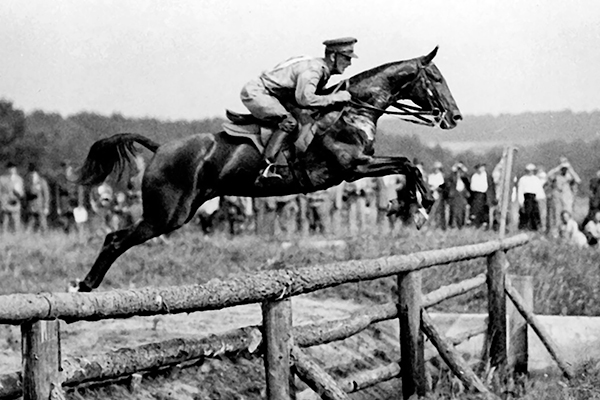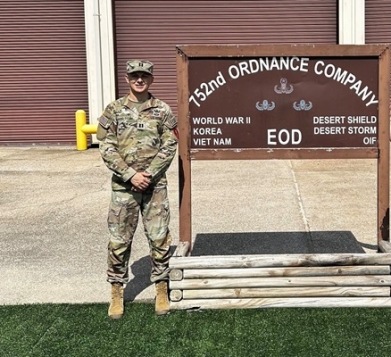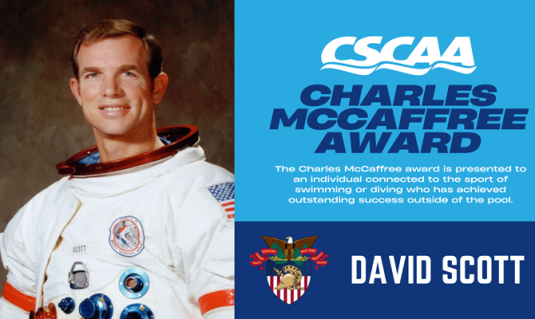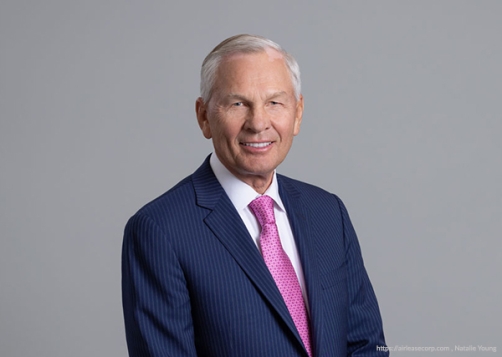By Tom Lough ’64, Guest Author
The Games of the XXXIII Olympiad in Paris this summer mark the end of an era for the modern pentathlon. Since the inception of modern pentathlon at the 1912 Olympics, horseback riding over jumps has been one of the five disciplines of the sport (along with fencing, pistol shooting, swimming, and cross-country running). However, 28 quadrennials later, the 2024 Games will be the last time for horses in the modern pentathlon Olympic competition.
The ending of the “equestrian era” of modern pentathlon presents an opportunity to review West Point’s impressive Olympic modern pentathlon legacy.
The Background of Modern Pentathlon
When Baron Pierre de Coubertin founded the modern-era Olympic Games, he had a competition in mind to determine the greatest all-around athlete, similar to the pentathlon of the original Olympic Games held in ancient Greece. He may have been inspired by Aristotle’s description: “…the athletes in the pentathlon are most beautiful, because they are naturally adapted for bodily exertion and for swiftness of foot.”
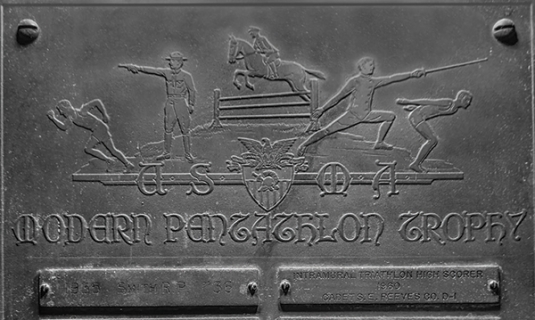
Coubertin’s proposal for a modern pentathlon for the 1912 Olympic Games in Stockholm, Sweden, included pistol shooting at turning targets 25 meters distant, swimming 300 meters, épée fencing, horse riding over a 5,000-meter course, and running cross-country over a 4,000-meter course.
Most early Olympic modern pentathlon competitors were military, probably because many of the competitive skills were those required of a soldier. This military preponderance was consistent with the adventures of a courier of Napoleonic days who had to deliver battle plans. This highly versatile messenger raced to the picket line, selected a horse at random, and dashed off with the plans. When the horse was spent, the courier continued on foot, fighting forward with pistol and sword. After swimming a river and running the remaining distance, the exhausted courier finally delivered the plans.
West Pointers and Olympic Modern Pentathlon
Of the almost 90 West Point Olympians in all sports, 25 have competed in modern pentathlon, beginning with Lieutenant George S. Patton Jr., Class of 1909.
At the 1912 Stockholm competition, Patton was a colorful and popular figure. In the pistol shooting event, he argued that two of his bullets had passed through the same hole. In view of his excellent marksmanship, this was not an outrageous claim. However, his protest was dismissed and he finished in fifth place overall.
From 1920 through 1952, West Point seemed the ideal place for the development of modern pentathlon athletes. Although opportunities for training in all five disciplines were readily available, the 1926 Athletic Board cautioned that the demanding daily schedule would not accommodate the necessary training for a cadet to be an Olympic modern pentathlon candidate. However, the Howitzer extracurricular activity listings of more than 60 cadets from 1928 through 1931 and 1936 through 1941 suggest that organized modern pentathlon training programs were run for cadets during those time periods. The recent discovery of the Augustus Kirby Modern Pentathlon Trophy in a stairwell of the south gymnasium (leading up to Hayes Gym), the first physical evidence found of a cadet modern pentathlon training program, supports this claim.
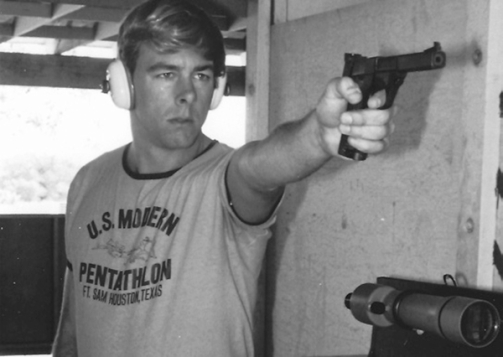
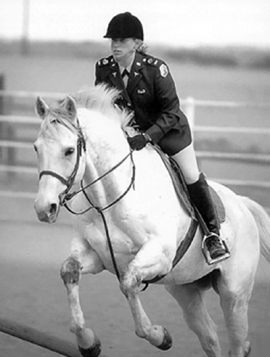
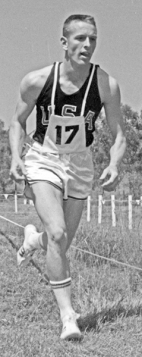
Through 1952, modern pentathlon Olympic teams from the United States were dominated by West Point graduates. The entire American team from the 1928 Olympics in Amsterdam were members of the Long Gray Line. Twenty-two graduates in total competed in the modern pentathlon between 1912 and 1952. Strong riding and fencing programs at the Academy also produced a number of West Point Olympic riders and fencers, such as Earl F. Thompson, Class of 1922, who won five medals in riding over the course of three Olympics (1932, 1936, and 1948); and Gustave M. Heiss ’31 who won a team bronze medal in épée fencing in 1932.
One of the most notable Olympic modern pentathlon achievements by a West Pointer took place during the 1936 Games in Berlin. Charles F. Leonard Jr. ’35 shot a perfect score of 200 out of 200 possible points, something no other Olympian was ever able to do.
In 1952, Guy K. Troy ’46 was assigned the task of setting up a modern pentathlon training camp at West Point. During the Olympic trials, he performed well enough to be selected to compete in the 1952 Games in Helsinki, along with two graduates from the Class of 1951.
When the Academy’s riding and fencing programs were discontinued in the 1950s, the number of West Point modern pentathlon Olympians dropped off immediately. Since 1952, West Point has produced only three modern pentathlon Olympians: Maurice T. “Tom” Lough ’64, Robert G. “Greg” Losey ’72, and Anita F. Allen ’00.
Even though the Academy has had competitive clubs for equestrian, fencing, pistol, and triathlon for decades now, no additional modern pentathlon Olympians have been produced since 2004.
Of the six silver medals and three bronze medals won by United States athletes in modern pentathlon, three silver and one bronze were brought home by West Pointers. Richard Mayo, Class of 1926, began the harvest with a bronze medal in 1932, followed by Leonard with a silver in 1936 and George “Bis” Moore ’41 with an additional silver in 1948. It was not until 1984 that a West Pointer produced another Olympic modern pentathlon medal, when Losey won a team silver medal.
West Point and the Future of Modern Pentathlon
Starting in 2028 at the Los Angles Games, obstacle running will replace the equestrian event as the new fifth discipline, ushering in a new era for the Olympic modern pentathlon and a development opportunity for West Point cadets. Most cadets have basic running and swimming abilities, and the common experience of the Indoor Obstacle Course may relate closely to obstacle running in the new pentathlon, increasing the potential for the number of West Point modern pentathlon Olympians. If cadets could develop competence in these three events and pick up fencing and pistol shooting skills, they may be able to develop into modern pentathlon Olympic contenders after graduation.
Upon completing an initial leadership tour of duty, graduates talented in modern pentathlon (or other sports) may apply for the World Class Athletes Program (WCAP) of their branch of military service. If they meet the stringent WCAP athletic standards, they may qualify for advanced training and competition opportunities in their sports, including the use of the facilities and programs of the U.S. Olympic/Paralympic Training Center.
By raising the awareness of the modern pentathlon among cadets (particularly among those already in triathlon, fencing, and pistol shooting) and perhaps by providing an outdoor obstacle training course for cadet use, West Point could produce even more modern pentathlon Olympians in the future.
Tom Lough, a 1964 graduate of West Point, competed in the modern pentathlon at the 1968 Olympic Games in Mexico City. He served 10 years in the U.S. Army as a combat engineer, with tours in Korea, Vietnam, and Germany. With a Ph.D. in educational psychology, his academic interests include science education and sport history. He has coordinated a series of initiatives at West Point to increase awareness of the Academy’s Olympic legacy. He is the composer of “Ever Faithful to the Call” (www.everfaithfultothecall.com), a soldier’s hymn being widely sung for Veterans Day.
What do you think? Click here to answer 3 questions.

